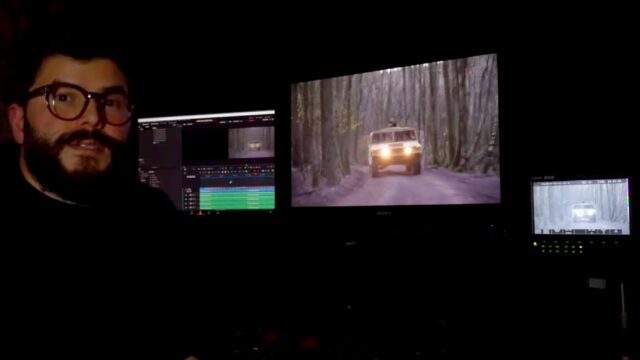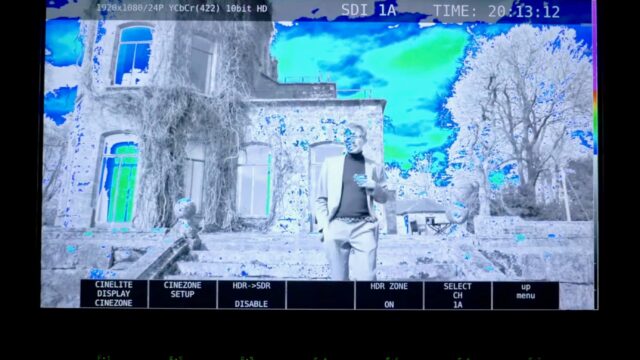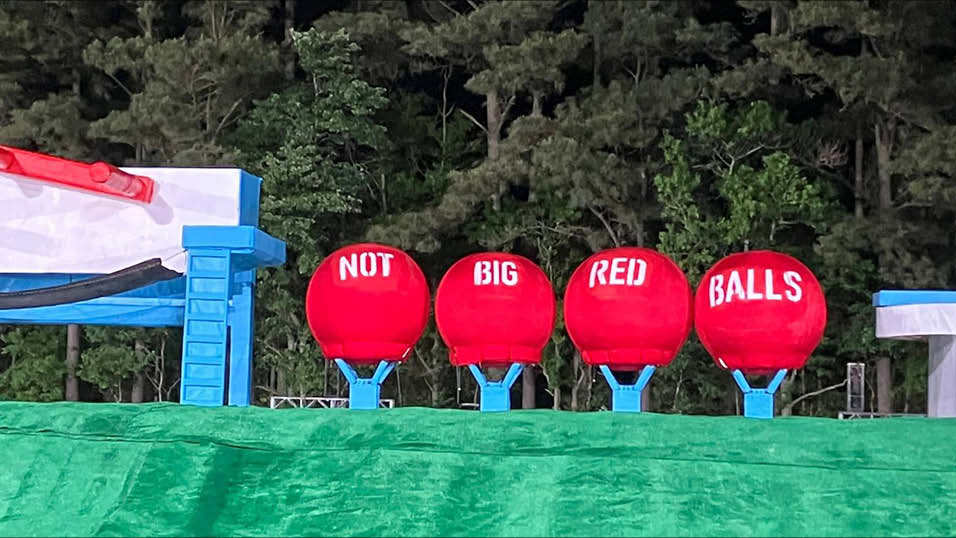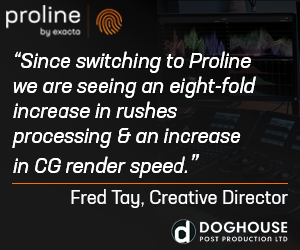Joining the Dots…
The Importance of a Consistent, Managed HDR Colour Pipeline from On-Set through Grade
On the 18th February, Televisual and Mission explored the importance of a managed HDR colour pipeline as a live virtual panel session.
You can watch the recording here.
The panellists all have extensive high profile HDR credits for Netflix, Amazon and other broadcasters and have complimenting roles and perspectives to help build a comprehensive presentation:
Asa Shoul Colourist, Warner Bros De Lane Lea (all seasons of Netflix’ The Crown, all seasons, FX’ Devs and just tx’ed Netflix’ Behind Her Eyes)
Tom Mitchell, Technical Director, Mission (Mission are responsible for many high-profile HDR productions with recent credits including Netflix’ Rebecca, Netflix’ Enola Holmes and Netflix’ Emma)
Paco Ramos, Head of Colour, Mission (Amazon’s Unfortunate Stories, Netflix’ Hache, Season 2 and Movistar’s Reyes de la Noche)

The session is a comprehensive walk-through of common issues encountered when shooting for an HDR deliverable and what can be done in pre-production, on-set and in post to mitigate against this. The session style is practical with a clear agenda to provide best practice advice, leaning heavily on the speakers’ direct experiences. Within a tightly packed hour, the session covered five key themes:
What can go wrong on-set?
Common issues covered include:
- clipped highlights (and managing bright lights with different exposure settings to SDR)
- underexposing in low contrast scenes, shooting talent against bright backgrounds (like windows)
- and how ambient light (like background car headlights) can be difficult to fix or feel unnatural later in the grade.
“We’re called post production, but we’re pre now and we have to be. We always start with the deliverables, which can be quite complex. Different streaming services and broadcasters have different requirements against what they want to broadcast and what they want to archive… There’s lots of back and forward with broadcaster, VFX and dailies before you even start filming” Asa Shoul
What should happen in pre-production?
Themes include:
- working with the streamer and all stakeholders, including VFX, to define a range of deliverables
- working with the cinematographer to establish a look
- what are you testing for in the prep room (with an emphasis on the talent)?
- setting up LUTs and LMTs that are fit for purpose (and headline considerations)
- the value of ACES as a fully iterated HDR colour pipeline and avoiding surprises
- and what are you looking for when reviewing the test shots in HDR and what are you testing for with scopes?

“If you don’t manage your HDR colour pipeline, it’s going to be chaotic. It will cost money and you’ll get an undesired result. Fix it in pre.” Tom Mitchell
What’s the role of the colour supervisor and the dailies perspective?
Picking up from pre-production, Paco expands on:
- maintaining the HDR colour pipeline
- setting the right output transform to ensure a consistent image
- working with the LUTs or LMTs from prep
- reviewing camera settings and what to consider when additional cameras are introduced into the production
- and defining nit values around base white at 203 nits in HDR.
This is followed by a short video Paco recorded looking at the use of HDR monitors and scopes on set and for dailies.

Why is HDR monitoring important across the chain?
- on-set to see the HDR you’re recording, to highlight issues, double check exposure settings and that it will translate to SDR and adjust if needed ahead of an HDR grade and deliverable. There are multiple monitors available like the new Sony PVM-X1800 and 2400 or the older BVM-E171 which might only be 600 Nits (which is generally enough) but in all cases match the Sony BVM-X300 and HX310 grading standard monitoring for a consistent colour rendition. While you might never have the viewing conditions on-set you might in post (for example in a bright environment)
- in editorial not having HDR monitoring can just mean ‘best guess’ where at least a good 55” HDR TV is preferred to an SDR standard display or better still something like the PVM-X2400 or BVM-E171. How dark / low light scenes can fall apart later on in the chain and yes, performance comes first but changing light and exposure can have later repercussions.
- in VFX where it is essential that key supervisors and producers can see HDR ahead of sending over to grade and ideally the HDR colour pipeline can be maintained
- in the grade where it is perhaps most obvious but also the idea that even if the current deliverable is SDR, you can have confidence in HDR as the primary colour pipeline, particularly working with Dolby Vision 4.0, and for a more consistent result. And identifying possible issues with what grading systems you’re using ahead of outputting the Netflix NAM & VDM.
“Develop the critical eye you already have for SDR and develop it for HDR” Paco Ramos
When is test & measurement important?
- Creatively defining how far you want to go with your brightness levels on-set and analyse where the images sit within SDR and HDR to make better or alternative choices to tell the story you want to tell. To pick up and isolate errors which you might otherwise be unaware of as your eyes can be tricked where a scope – like the Leader LV5350 – objectively analyses the picture for you. You can make proactive decisions with absolute values rather than reactive fixes
- Test and measurement add an additional level of authentication in post. Tools like the Leader LV5600 waveform monitor or LV7600 rasterizer compensate for viewer repetition (for example when pushing a specific look) by confirming absolute nit levels both in the grade and in QC. It is always visual first, but you always want to confirm
“The more you can see earlier on, the better result at the end. You’ll achieve that more easily and faster and it will be more beautiful.” Asa Shoul
The session was hosted and staged by Televisual and Mission
The session is sponsored by Leader Instruments and Sony
And supported by Band Pro Film & Digital in the USA and Big Pic Media in the UK
See the session live recording
Find out more about Sony HDR monitoring at
https://pro.sony/en_GB/products/broadcast-monitors/trimaster-4k-professional-monitors
Find out more about Leader Electronics test and measurement products at
https://www.facebook.com/LeaderElectronicsCorp
Jon Creamer
Share this story



















